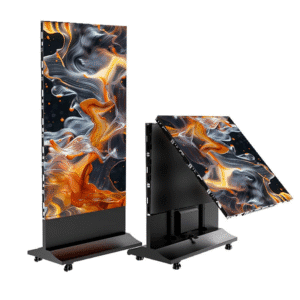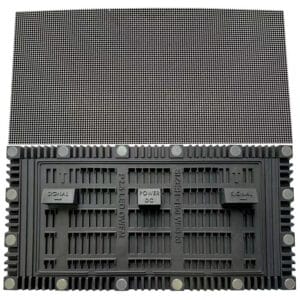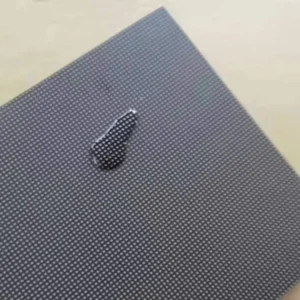Concert LED Display
HARSE concert LED display screen brings a wonderful audio-visual feast to the audience
Concert LED Display Solution
LED display price
Just fill the sizes, and get your led screen budget right now !




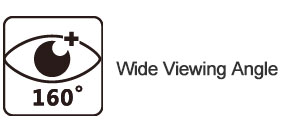
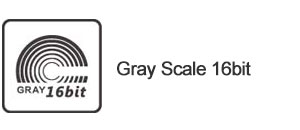
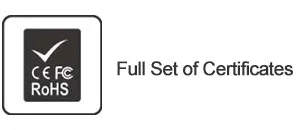

Types of Concert LED Displays
When it comes to electrifying a concert venue, different types of LED displays play crucial roles:
Indoor Stage LED Walls
These high-resolution screens serve as the main backdrop, offering crisp visuals even in controlled lighting environments.
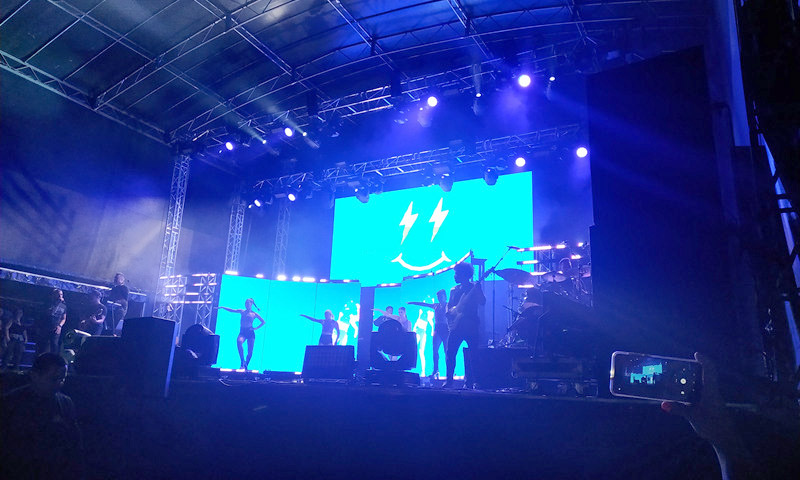
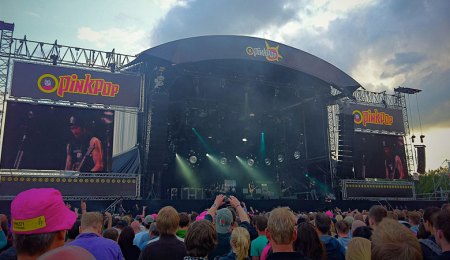
Outdoor Stage LED Displays
Built to withstand the elements, these robust screens bring the wow factor to festivals and open-air concerts.
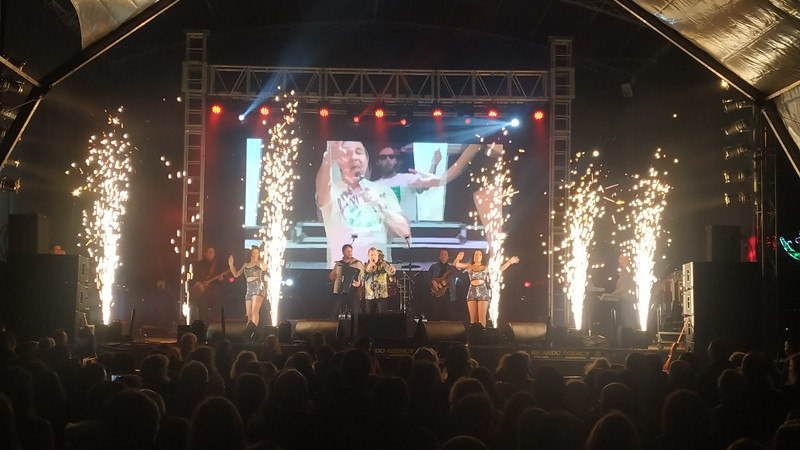
stage background led display
Surrounding the stage or venue, these displays create an immersive experience from every angle.
Modular LED Panels
Versatile building blocks that can be configured into various shapes and sizes to suit different stage designs.
- HARSE rental LED screens can be installed in a variety of ways, such as stacked or suspended. Suitable for your concert venue layout and space.
- HARSE LED can work with you to create the most coordinated and distinctive stage LED video wall according to your stage design.
- HARSE LED offers an advanced control system that allows you to easily manage and update content on your LED screens, ensuring your information is always timely and relevant.
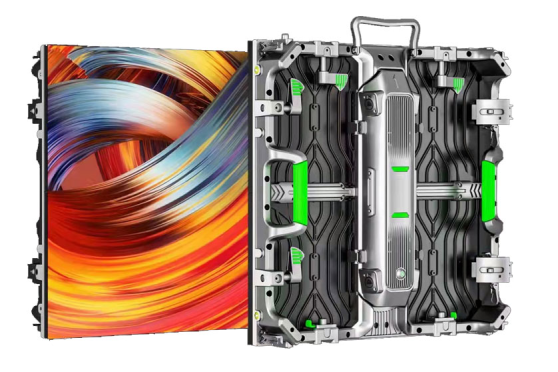
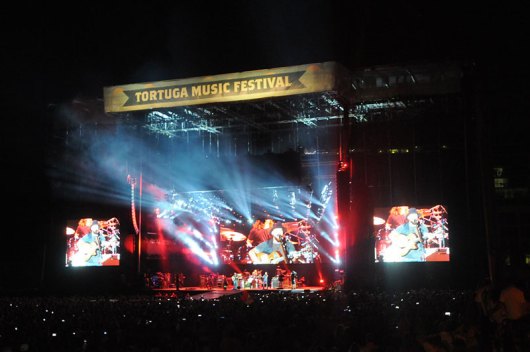
What sets professional concert LED displays apart?
GET QUOTE NOW
Creative LED display design
HARSE specializes in creating captivating and innovative designs for Creative LED display projects.Tell me your idea and let’s make it happen!
Hexagonal LED display
Creative geometric LED display for museum, company show room, banks, shopping mall,Iconic buildings or tourist attractions need a unique and creative LED display!
The Ultimate Guide to Concert LED Display Screens: Illuminating the Stage Experience
Click Here to Jump!
- Introduction to Concert LED Display Screens.
- Why Choose Concert LED Display for Stage Backdrop?
- Types of Concert LED Displays
- Key Features of High-Quality Concert LED Screens
- Indoor Stage LED Walls vs. Outdoor Stage LED Displays
- Modular LED Panels: Flexibility and Creativity in Stage Design
- The Impact of LED Stage Screens on Audience Experience
- Technical Considerations for Concert LED Displays
- Choosing the Right LED Display for Your Concert Venue
- Maintenance and Longevity of Concert LED Screens
- Future Trends in Concert LED Display Technology
- Case Studies: Iconic Concerts with Stunning LED Displays
- Conclusion: Elevating Live Performances with LED Technology
1.Introduction to Concert LED Display Screens
In the ever-evolving world of live entertainment, concert LED display screens have become an indispensable element in creating unforgettable stage experiences. These vibrant, high-resolution displays have revolutionized the way artists connect with their audience, transforming concerts into immersive visual spectacles that complement the music and enhance the overall performance.
As technology continues to advance, LED displays have become more versatile, efficient, and visually stunning than ever before. From massive outdoor festivals to intimate indoor venues, these screens serve as dynamic backdrops that can transport concertgoers to entirely new worlds, amplify emotions, and create lasting memories.
In this comprehensive guide, we’ll explore the fascinating world of concert LED display screens, delving into their various types, key features, and the impact they have on both performers and audiences alike. Whether you’re a concert organizer, venue manager, or simply a music enthusiast, this article will provide you with valuable insights into the technology that’s reshaping the live music industry.
2.Why Choose Concert LED Display for Stage Backdrop?
When it comes to creating a captivating stage presence, concert LED displays offer numerous advantages over traditional backdrop options. Here are some compelling reasons why LED screens have become the go-to choice for modern stage designs:
Dynamic Visual Content: Unlike static backdrops, LED displays allow for real-time content changes, enabling artists to synchronize visuals with their performances and create a more engaging experience for the audience.
Versatility: LED screens can adapt to various stage sizes and configurations, making them suitable for both large-scale arena tours and smaller club performances.
High Brightness and Contrast: LED technology provides exceptional brightness and contrast ratios, ensuring that visuals remain vivid and clear even in challenging lighting conditions.
Energy Efficiency: Modern LED displays consume less power compared to traditional lighting setups, making them a more environmentally friendly and cost-effective option for long-running tours and events.
Durability: Built to withstand the rigors of frequent transportation and setup, concert LED displays are designed for longevity and reliability in demanding performance environments.
By incorporating LED displays into your stage design, you can create a more immersive and memorable concert experience that will leave a lasting impression on your audience.
3.Types of Concert LED Displays
The world of concert LED displays offers a wide array of options to suit different venue sizes, budget constraints, and creative visions. Understanding the various types available can help you make an informed decision when selecting the right display for your event. Here are some of the most common types of concert LED displays:
1. Modular LED Panels
Modular LED panels are versatile building blocks that can be assembled into screens of various sizes and shapes. These panels offer flexibility in design and are easy to transport, making them ideal for touring productions. Key features include:
- Seamless connections between panels
- Customizable screen sizes and aspect ratios
- Quick assembly and disassembly
- Scalability for future expansions
2. Curved LED Displays
Curved LED displays add depth and dimension to stage designs, creating immersive environments that wrap around performers. These displays can be configured in concave or convex shapes, offering unique visual possibilities. Benefits include:
- Enhanced viewing angles for audience members
- Creation of 3D-like visual effects
- Improved stage aesthetics and spatial design
3. Transparent LED Screens
Transparent LED screens provide a futuristic look while allowing visibility through the display. These screens can be used to create layered visual effects or to maintain sight lines to performers behind the screen. Advantages include:
- Unique visual aesthetics
- Ability to combine real and digital elements
- Versatility in stage design and lighting integration
4. Floor LED Displays
Floor LED displays transform the stage itself into a dynamic visual canvas. These rugged panels are designed to withstand the weight of performers and equipment while delivering stunning visuals from below. Key features include:
- High weight capacity and durability
- Anti-slip surface for performer safety
- Integration with vertical LED walls for seamless visuals
By understanding the unique characteristics of each type of LED display, you can choose the most appropriate solution for your concert venue and creative vision.
4.Key Features of High-Quality Concert LED Screens
When selecting a concert LED display, several key features contribute to the overall quality and performance of the screen. Paying attention to these characteristics will ensure that you invest in a display that meets the demanding requirements of live concert environments:
Resolution and Pixel Pitch: The resolution and pixel pitch of an LED screen determine its image quality and optimal viewing distance. For concert applications, consider the following:
- Higher resolution screens (smaller pixel pitch) for close-up viewing
- Lower resolution screens (larger pixel pitch) for distant viewing in large venues
- Balance between resolution and cost based on venue size and budget
Brightness and Contrast: Exceptional brightness and contrast ratios are crucial for maintaining image quality in various lighting conditions:
- Look for displays with high nit ratings (2,000+ nits for outdoor use)
- HDR (High Dynamic Range) capability for enhanced color depth and contrast
- Adjustable brightness levels for different performance scenarios
Refresh Rate and Frame Rate: To ensure smooth motion and prevent visible flickering, prioritize screens with:
- High refresh rates (3,840Hz or higher)
- Support for high frame rates (60fps or higher)
- Low latency for real-time content synchronization
Color Accuracy and Gamut: Vibrant and accurate color reproduction is essential for creating impactful visuals:
- Wide color gamut coverage (e.g., 110% NTSC)
- 16-bit or higher color processing for smooth gradients
- Factory calibration and on-site color adjustment capabilities
Viewing Angle: Wide viewing angles ensure that audience members can enjoy clear visuals from various positions:
- Horizontal and vertical viewing angles of 140° or greater
- Consistent brightness and color across viewing angles
By prioritizing these key features, you can select a concert LED display that delivers stunning visuals and enhances the overall performance experience for both artists and audience members.
5. Indoor Stage LED Walls vs. Outdoor Stage LED Displays
When it comes to choosing the right LED display for your concert venue, it’s crucial to understand the differences between indoor and outdoor LED screens. Each type is designed to perform optimally in its respective environment, taking into account factors such as lighting conditions, weather resistance, and viewing distances.
Indoor Stage LED Walls
Indoor LED walls are engineered for controlled environments where ambient light can be managed. These displays offer several advantages for indoor concert venues:
Higher Resolution: Indoor LED walls typically feature smaller pixel pitches, resulting in higher resolution and sharper image quality for close-up viewing.
Enhanced Color Accuracy: With less interference from sunlight, indoor displays can achieve more accurate color reproduction and deeper blacks.
Lightweight Construction: Indoor LED panels are often designed with lighter materials, making them easier to install and reconfigure for different stage setups.
Lower Brightness Requirements: Since ambient light is controlled, indoor LED walls don’t need to be as bright as their outdoor counterparts, potentially reducing power consumption and heat generation.
Finer Details: The controlled environment allows for the use of LED panels with smaller diodes, enabling the display of intricate visual content and text.
Outdoor Stage LED Displays
Outdoor LED displays are built to withstand challenging environmental conditions while delivering vibrant visuals in bright daylight. Key features of outdoor LED screens include:
High Brightness: Outdoor displays boast significantly higher brightness levels (measured in nits) to ensure visibility in direct sunlight.
Weather Resistance: These screens are designed to resist water, dust, and extreme temperatures, with IP65 or higher ratings for protection against the elements.
Robust Construction: Outdoor LED panels feature reinforced frames and components to withstand wind loads and other environmental stresses.
Wide Viewing Angles: To accommodate large outdoor crowds, these displays offer ultra-wide viewing angles without compromising brightness or color accuracy.
Larger Pixel Pitch: Outdoor LED screens often have larger pixel pitches, as they are typically viewed from greater distances.
When choosing between indoor and outdoor LED displays, consider the following factors:
- Venue type and location
- Expected weather conditions
- Viewing distances and audience size
- Budget constraints
- Portability requirements (for touring productions)
By selecting the appropriate type of LED display for your specific concert environment, you can ensure optimal performance and visual impact for your audience.
6. Modular LED Panels: Flexibility and Creativity in Stage Design
Modular LED panels have revolutionized stage design by offering unparalleled flexibility and creative possibilities. These versatile building blocks allow for the creation of custom-shaped displays that can adapt to various venue sizes and artistic visions. Here’s why modular LED panels are a game-changer for concert stage design:
Customizable Configurations: Modular panels can be assembled into screens of virtually any size or shape, enabling designers to create:
- Curved displays that wrap around the stage
- Multi-dimensional structures with depth and texture
- Asymmetrical designs that break away from traditional rectangular screens
Scalability: As your production needs grow or change, modular LED panels can be easily:
- Expanded by adding more panels
- Reconfigured for different venue sizes
- Divided into multiple smaller displays for diverse stage elements
Easy Transportation and Setup: The modular nature of these panels offers several logistical advantages:
- Compact storage and transportation
- Quick assembly and disassembly
- Reduced labor costs for installation and maintenance
Seamless Integration: High-quality modular panels feature precise engineering that allows for:
- Seamless connections between panels, creating a uniform display surface
- Integration with other stage elements such as set pieces and lighting rigs
- Compatibility with various content management systems and video processors
Creative Freedom: The versatility of modular LED panels empowers designers to:
- Create immersive environments that surround performers and audience
- Incorporate 3D elements and forced perspective illusions
- Develop dynamic, shape-shifting displays that evolve throughout the performance
To maximize the potential of modular LED panels in your stage design, consider the following tips:
- Collaborate closely with your creative team to explore innovative panel configurations
- Invest in high-quality panels with precise alignment mechanisms for seamless connections
- Utilize specialized software for 3D visualization and content mapping
- Experiment with different panel sizes and resolutions to achieve desired visual effects
- Consider incorporating interactive elements that respond to performer movements or audience participation
By embracing the flexibility of modular LED panels, you can create truly unique and memorable stage designs that elevate the concert experience to new heights.
7.The Impact of LED Stage Screens on Audience Experience
LED stage screens have fundamentally transformed the way audiences experience live concerts, creating a more immersive and emotionally engaging environment. The integration of dynamic visuals with live music has opened up new dimensions of entertainment, leaving lasting impressions on concertgoers. Let’s explore the various ways LED stage screens enhance the audience experience:
Visual Storytelling: LED screens enable artists to tell stories through visuals that complement their music, adding depth and context to their performances. This visual narrative can:
- Reinforce lyrical themes
- Create emotional atmospheres
- Provide historical or cultural context for the music
Enhanced Connection with Performers: Large LED displays can bring performers closer to the audience by:
- Showing close-up shots of musicians during instrumental solos
- Displaying live feeds of the crowd, creating a sense of unity
- Featuring pre-recorded behind-the-scenes content during set changes
Immersive Environments: LED screens can transform the entire venue into a dynamic, ever-changing environment:
- Surrounding the audience with panoramic visuals
- Creating the illusion of movement or transportation to different locations
- Synchronizing with lighting and special effects for a multi-sensory experience
Improved Visibility: In large venues, LED screens ensure that even audience members far from the stage can enjoy a clear view of the performance:
- Displaying live close-ups of performers
- Showing lyrics for sing-along moments
- Presenting additional visual content that complements the live action on stage
Interactive Elements: LED screens can facilitate audience participation and interaction:
- Displaying real-time social media feeds or fan messages
- Featuring interactive games or polls during breaks
- Showcasing audience-generated content as part of the performance
Memorable Moments: The combination of music and stunning visuals creates powerful, unforgettable experiences:
- Iconic visual moments that become associated with specific songs
- Surprise visual effects that elicit strong emotional responses
- Shareable content that audiences can capture and share on social media
To maximize the impact of LED stage screens on audience experience, consider the following strategies:
- Develop a cohesive visual strategy that aligns with the artist’s brand and musical style
- Incorporate a mix of live, pre-recorded, and real-time generated content
- Use data visualization to create unique, concert-specific visuals
- Experiment with different screen configurations to create novel viewing experiences
- Encourage audience interaction through social media integration and participatory elements
By leveraging the full potential of LED stage screens, you can create a concert experience that goes beyond just listening to music, engaging audiences on multiple sensory levels and leaving them with memories that will last a lifetime.
8.Technical Considerations for Concert LED Displays
When implementing LED displays for concert applications, several technical considerations must be addressed to ensure optimal performance and reliability. Understanding these factors will help you make informed decisions and avoid potential issues during live events. Here are key technical aspects to consider:
Processing Power and Content Management:
- Invest in powerful video processors capable of handling high-resolution content
- Implement redundant signal paths to prevent display failures
- Utilize content management systems designed for live event environments
- Consider real-time rendering capabilities for dynamic, responsive visuals
Signal Distribution and Connectivity:
- Choose appropriate signal distribution methods (e.g., fiber optic, HDBaseT)
- Implement signal redundancy to ensure uninterrupted performance
- Use high-quality connectors and cables rated for frequent use and transportation
- Consider wireless options for flexible content delivery in challenging environments
Power Management:
- Calculate total power requirements for the LED display system
- Implement proper power distribution and surge protection
- Consider backup power solutions for critical components
- Monitor power consumption and temperature to prevent overheating
Cooling and Ventilation:
- Ensure adequate ventilation for LED panels and processing equipment
- Implement temperature monitoring and automatic shutdown features
- Consider additional cooling solutions for outdoor events in hot climates
- Design enclosures with proper airflow management
Calibration and Color Management:
- Perform regular on-site calibration to maintain color accuracy
- Implement color management systems for consistent output across multiple screens
- Consider ambient light sensors for automatic brightness adjustment
- Use colorimeters and specialized software for precise color matching
Content Creation and Playback:
- Develop content at the native resolution of the LED display to avoid scaling artifacts
- Utilize high-performance media servers for smooth playback of high-resolution content
- Implement content scheduling and automation tools for complex shows
- Consider real-time content generation tools for interactive and dynamic visuals
Integration with Other Systems:
- Ensure compatibility with lighting control systems for synchronized effects
- Integrate with audio systems for precise audio-visual synchronization
- Implement timecode synchronization for multi-screen setups and complex shows
- Consider integration with stage machinery for coordinated movement of LED panels
Reliability and Redundancy:
- Implement hot-swappable components for quick replacements during live events
- Use redundant power supplies and signal paths for critical components
- Develop contingency plans for potential failures
- Conduct thorough testing and rehearsals before live performances
Transportation and Logistics:
- Design custom cases and packaging for safe transportation of LED panels
- Develop efficient load-in and load-out procedures
- Consider modular designs for easier handling and setup
- Implement inventory management systems to track individual panels and components
By addressing these technical considerations, you can ensure that your concert LED display system performs reliably and delivers stunning visuals throughout the event. Regular maintenance, software updates, and staff training are also crucial for long-term success in managing complex LED display systems for live concerts.
9.Choosing the Right LED Display for Your Concert Venue
Selecting the appropriate LED display for your concert venue is a crucial decision that can significantly impact the overall success of your events. To make an informed choice, consider the following factors and guidelines:
Venue Size and Layout:
- Measure the available space for LED installation
- Consider viewing distances and angles for different seating areas
- Evaluate potential obstructions (e.g., pillars, balconies) that may affect visibility
- Determine if modular or custom-shaped displays would better suit the venue’s architecture
Indoor vs. Outdoor Requirements:
- For indoor venues, focus on high-resolution displays with excellent color accuracy
- For outdoor venues, prioritize brightness, weather resistance, and durability
- Consider hybrid solutions for venues with both indoor and outdoor areas
Budget Constraints:
- Determine your total budget, including installation and ongoing maintenance costs
- Consider long-term ROI, factoring in energy efficiency and longevity
- Explore rental options for occasional use or to test different configurations
Content Strategy:
- Assess the types of content you plan to display (e.g., live camera feeds, pre-rendered visuals, text)
- Determine required resolution based on content complexity and viewing distances
- Consider the need for interactive or real-time generated content
Technical Specifications:
- Evaluate pixel pitch options based on viewing distances and content requirements
- Consider brightness levels needed for your lighting environment
- Assess color depth and gamut coverage for accurate reproduction of visuals
- Evaluate refresh rates and frame rates for smooth motion handling
Flexibility and Scalability:
- Choose modular systems if you need to reconfigure displays for different events
- Consider future expansion possibilities when selecting panel types and processing systems
- Evaluate the ease of transportation and setup for touring productions
Integration with Existing Systems:
- Ensure compatibility with your current video and lighting control systems
- Consider signal distribution methods that work with your venue’s infrastructure
- Evaluate power requirements and availability in your venue
Support and Maintenance:
- Research manufacturer support and warranty options
- Consider the availability of local technicians for repairs and maintenance
- Evaluate the ease of replacing individual modules or components
Environmental Impact:
- Consider energy-efficient options to reduce power consumption and heat generation
- Evaluate the recyclability and environmental impact of different LED technologies
- Look for manufacturers with sustainable production practices
Safety and Compliance:
- Ensure that the chosen LED display meets local safety regulations and building codes
- Consider fire-resistant materials for indoor installations
- Evaluate structural requirements for mounting and supporting the LED display
To make the best decision, follow these steps:
- Conduct a thorough venue analysis, including measurements and technical assessments
- Develop a clear content strategy and technical requirements document
- Research multiple LED display manufacturers and compare their offerings
- Request on-site demonstrations of different LED display options
- Consult with experienced AV professionals or system integrators
- Consider total cost of ownership, including maintenance and potential upgrades
- Evaluate customer reviews and case studies from similar venues or events
- Negotiate warranty terms and support agreements
By carefully considering these factors and following a structured decision-making process, you can select an LED display that not only meets your current needs but also provides long-term value and flexibility for your concert venue.
10.Maintenance and Longevity of Concert LED Screens
Proper maintenance is crucial for ensuring the longevity and optimal performance of concert LED screens. By implementing a comprehensive maintenance strategy, you can protect your investment, minimize downtime, and consistently deliver high-quality visuals to your audience. Here are key aspects to consider for maintaining your LED displays:
Regular Cleaning:
- Develop a schedule for routine cleaning of LED panels
- Use appropriate cleaning solutions and soft cloths to avoid damage
- Train staff on proper cleaning techniques for different panel types
- Consider professional cleaning services for hard-to-reach areas
Visual Inspections:
- Conduct regular visual checks for dead pixels, color inconsistencies, or physical damage
- Implement a reporting system for staff to flag any issues they notice during events
- Use specialized software to run diagnostic patterns for thorough inspections
Calibration and Color Management:
- Perform regular color calibration to maintain consistency across all panels
- Use professional-grade colorimeters and software for precise adjustments
- Keep records of calibration settings and schedules
- Consider automatic calibration systems for large-scale installations
Thermal Management:
- Monitor operating temperatures of LED panels and processing equipment
- Ensure proper ventilation and airflow around all components
- Clean or replace air filters in cooling systems regularly
- Address any hot spots or thermal issues promptly to prevent damage
Power Management:
- Implement proper power cycling procedures to extend component life
- Use high-quality surge protectors and power conditioning equipment
- Regularly inspect power cables and connections for wear or damage
- Consider automated power management systems for large installations
Software and Firmware Updates:
- Keep all system software and firmware up to date
- Test updates in a controlled environment before applying to live systems
- Maintain backups of stable software versions and system configurations
- Stay informed about manufacturer updates and security patches
Spare Parts Inventory:
- Maintain an inventory of critical spare parts (e.g., LED modules, power supplies)
- Implement a system for tracking and replenishing spare parts
- Consider stocking specialized tools required for repairs and maintenance
- Establish relationships with suppliers for quick access to replacement components
Staff Training:
- Provide comprehensive training for technical staff on maintenance procedures
- Develop clear documentation and troubleshooting guides
- Offer ongoing training to keep staff updated on new technologies and best practices
- Consider certification programs offered by LED display manufacturers
Preventive Maintenance Schedule:
- Develop a comprehensive preventive maintenance schedule
- Include tasks such as connector cleaning, cable inspections, and firmware updates
- Adjust maintenance frequency based on usage patterns and environmental factors
- Use maintenance management software to track schedules and history
Environmental Controls:
- Implement humidity and temperature control in storage and operation areas
- Use dust covers when displays are not in use
- Consider specialized enclosures for outdoor installations
- Monitor and address any environmental factors that could impact display longevity
Documentation and Record Keeping:
- Maintain detailed records of all maintenance activities and repairs
- Document any modifications or upgrades to the system
- Keep an up-to-date inventory of all components and their service history
- Use this data to identify trends and optimize maintenance strategies
Professional Servicing:
- Schedule regular professional servicing from manufacturer-certified technicians
- Consider extended warranty or service contracts for critical components
- Develop relationships with local AV integrators for emergency support
By implementing these maintenance strategies, you can significantly extend the life of your concert LED screens and ensure they continue to deliver stunning visuals year after year. Remember that proactive maintenance is always more cost-effective than reactive repairs, so invest in a comprehensive maintenance program from the outset.
11.Future Trends in Concert LED Display Technology
The world of concert LED display technology is constantly evolving, with new innovations promising to revolutionize the way we experience live music events. Staying informed about these emerging trends can help you make forward-thinking decisions when investing in LED display systems. Here are some exciting developments to watch:
Micro LED Technology:
- Smaller LED pixels for ultra-high resolution displays
- Improved energy efficiency and brightness
- Enhanced color accuracy and contrast ratios
- Potential for flexible and transparent displays
AI-Powered Content Generation:
- Real-time visual content creation based on music analysis
- Personalized visuals tailored to audience demographics
- Automated content optimization for different display configurations
- Integration with emotion recognition technology for responsive visuals
Augmented Reality (AR) Integration:
- Blending of physical LED displays with AR elements
- Interactive experiences using smartphone apps
- Virtual extension of stage designs beyond physical screens
- Enhanced audience participation through AR gamification
8K and Beyond:
- Ultra-high resolution displays for immersive experiences
- Advanced processing capabilities for smooth 8K content playback
- Improved upscaling technologies for lower resolution content
- Potential for “wall-to-wall” high-resolution LED environments
Flexible and Shapeable Displays:
- LED panels that can bend and curve to create unique shapes
- Rollable LED screens for easy transportation and setup
- Integration with kinetic stage elements for dynamic visual effects
- Custom-molded LED surfaces that conform to complex stage designs
Holographic and Volumetric Displays:
- Integration of holographic elements with traditional LED screens
- True 3D volumetric displays for floating visual effects
- Combination of LED and projection mapping for immersive environments
- Enhanced depth perception without the need for 3D glasses
Sustainable and Eco-Friendly Solutions:
- LED panels made from recyclable and biodegradable materials
- Ultra-low power consumption displays
- Solar-powered LED screens for outdoor events
- Implementation of circular economy principles in manufacturing
5G and Edge Computing Integration:
- Real-time content streaming and synchronization across multiple venues
- Reduced latency for live interactions between performers and visuals
- Decentralized processing for complex, data-driven visual effects
- Enhanced remote management and monitoring capabilities
Advanced Color Management:
- Wider color gamuts approaching or exceeding human visual perception
- Implementation of HDR (High Dynamic Range) for enhanced contrast
- Automatic color calibration systems using AI and machine learning
- Customizable color profiles for different genres and moods
Interactive and Responsive Displays:
- Motion-sensing technology for performer-responsive visuals
- Crowd interaction through smartphone integration
- Touch-sensitive LED surfaces for interactive stage elements
- Biometric data integration for personalized visual experiences
Nano-LED Technology:
- Even smaller LED elements for higher pixel density
- Potential for paper-thin, lightweight displays
- Improved durability and lifespan of LED components
- Enhanced optical properties for better off-angle viewing
AI-Driven Predictive Maintenance:
- Intelligent systems that predict and prevent display failures
- Automated diagnostics and self-healing capabilities
- Optimized performance through machine learning algorithms
- Reduced downtime and maintenance costs
As these technologies continue to develop, we can expect concert LED displays to become more immersive, interactive, and seamlessly integrated with other aspects of live performance. The future of concert visuals promises to be an exciting blend of cutting-edge hardware, intelligent software, and creative applications that will push the boundaries of what’s possible in live entertainment.
To stay ahead of the curve:
- Attend industry trade shows and conferences to see the latest innovations firsthand
- Engage with LED display manufacturers and keep an eye on their R&D efforts
- Collaborate with creative technologists to explore novel applications of emerging technologies
- Consider implementing modular systems that can be easily upgraded as new technologies become available
- Stay informed about advancements in related fields such as VR, AR, and AI, as these will likely influence future LED display developments
By keeping abreast of these trends and considering their potential impact on your productions, you can make informed decisions that will help future-proof your investment in concert LED display technology.
12.Case Studies: Iconic Concerts with Stunning LED Displays
To truly appreciate the impact of LED display technology on live music performances, let’s explore some iconic concerts that have set new standards for visual spectacle. These case studies demonstrate the creative possibilities and technical achievements possible with state-of-the-art LED displays:
U2 – 360° Tour (2009-2011):
- Featured a massive circular LED screen suspended above the stage
- The screen could expand and contract, creating dynamic visual effects
- Utilized high-resolution panels for clear visibility in large stadiums
- Integrated with a complex moving stage structure for a truly immersive experience
Key Takeaway: Demonstrates the potential for large-scale, kinetic LED structures in stadium tours.
Beyoncé – Formation World Tour (2016):
- Showcased a massive, rotating LED cube as the centerpiece
- High-resolution displays allowed for seamless content across multiple surfaces
- Incorporated live camera feeds and pre-rendered content for a dynamic show
- Used LED technology to create illusions of depth and movement on stage
Key Takeaway: Illustrates the power of combining LED displays with innovative stage design for a visually stunning performance.
Eric Prydz – EPIC 6.0 Holosphere (2019):
- Featured a giant LED sphere with the artist performing inside
- Utilized transparent LED panels for a see-through effect
- Synchronized visuals with music for an immersive audiovisual experience
- Pushed the boundaries of 3D content creation for spherical displays
Key Takeaway: Shows the potential for creating unique, immersive environments with custom-shaped LED displays.
Coldplay – A Head Full of Dreams Tour (2016-2017):
- Implemented LED wristbands for the audience, creating a human LED display
- Used large LED screens on stage for vibrant backdrops
- Synchronized wristbands with on-stage visuals for a unified experience
- Demonstrated innovative use of LED technology for audience participation
Key Takeaway: Highlights the potential for extending the LED experience beyond the stage to include the entire venue.
Nine Inch Nails – Lights in the Sky Tour (2008):
- Utilized a series of semi-transparent LED curtains
- Created layered, 3D visual effects by projecting onto multiple LED screens
- Incorporated real-time generated visuals responsive to the music
- Demonstrated early adoption of interactive LED technology in concert settings
Key Takeaway: Shows the potential for creating depth and interactivity with multiple layers of LED displays.
Lady Gaga – Joanne World Tour (2017-2018):
- Featured a complex system of moving LED platforms and bridges
- Utilized high-resolution displays for seamless content across dynamic stage elements
- Incorporated interactive elements responding to performers’ movements
- Demonstrated advanced integration of LED displays with stage automation
Key Takeaway: Illustrates the potential for creating transformative stage environments with movable LED elements.
Muse – Simulation Theory World Tour (2019):
- Showcased a massive curved LED screen as the primary backdrop
- Incorporated augmented reality elements blended with physical LED displays
- Utilized real-time rendering for dynamic, responsive visuals
- Demonstrated the integration of cutting-edge gaming engines for live concert visuals
Key Takeaway: Highlights the potential for blending physical LED displays with virtual and augmented reality technologies.
The Weeknd – After Hours til Dawn Stadium Tour (2022):
- Featured a massive cityscape set with integrated LED elements
- Utilized large LED screens for atmospheric backdrops and close-up shots
- Incorporated a giant LED moon suspended above the audience
- Demonstrated effective use of LED technology to create a cohesive, immersive environment
Key Takeaway: Shows how LED displays can be seamlessly integrated into elaborate set designs to create a unified visual experience.
These case studies demonstrate the diverse applications of LED display technology in live music performances. From massive, kinetic structures to intricate, multi-layered designs, LED screens have become an integral part of creating unforgettable concert experiences. By studying these innovative uses of LED technology, concert organizers and designers can draw inspiration for their own productions, pushing the boundaries of what’s possible in live entertainment.
To leverage these insights:
- Analyze the technical specifications and setups used in these iconic concerts
- Consider how similar concepts could be adapted to different scales and budgets
- Explore partnerships with creative technologists and visual artists to develop unique concepts
- Invest in versatile, modular LED systems that can be reconfigured for different creative visions
- Stay open to emerging technologies that can be integrated with LED displays for novel effects
By learning from these groundbreaking productions, you can elevate your own concerts to new heights of visual spectacle and audience engagement.
13.Conclusion: Elevating Live Performances with LED Technology
As we’ve explored throughout this comprehensive guide, LED display technology has become an indispensable tool in the world of live music performances. From creating immersive visual environments to enhancing audience engagement, LED screens have transformed the concert experience in profound ways. Let’s recap the key points and look towards the future of this exciting technology:
Versatility and Impact: LED displays offer unparalleled flexibility in stage design, allowing for dynamic visual storytelling that complements and enhances musical performances.
Technological Advancements: Ongoing innovations in LED technology, such as higher resolutions, improved color accuracy, and more efficient power consumption, continue to push the boundaries of what’s possible in live entertainment.
Creative Possibilities: From modular panels to curved and transparent screens, LED technology provides a canvas for creative expression that can adapt to various artistic visions and venue requirements.
Audience Engagement: LED displays create immersive environments that captivate audiences, fostering a deeper connection between performers and fans.
Technical Considerations: Proper implementation of LED technology requires careful planning, from content creation to installation and maintenance, to ensure optimal performance and longevity.
Future Trends: Emerging technologies like Micro LED, AI-driven content generation, and integration with AR/VR promise to further revolut
Send Us A Message
To learn more about how Concert LED Display can transform your business, schedule a consultation with one of our audiovisual experts today!

